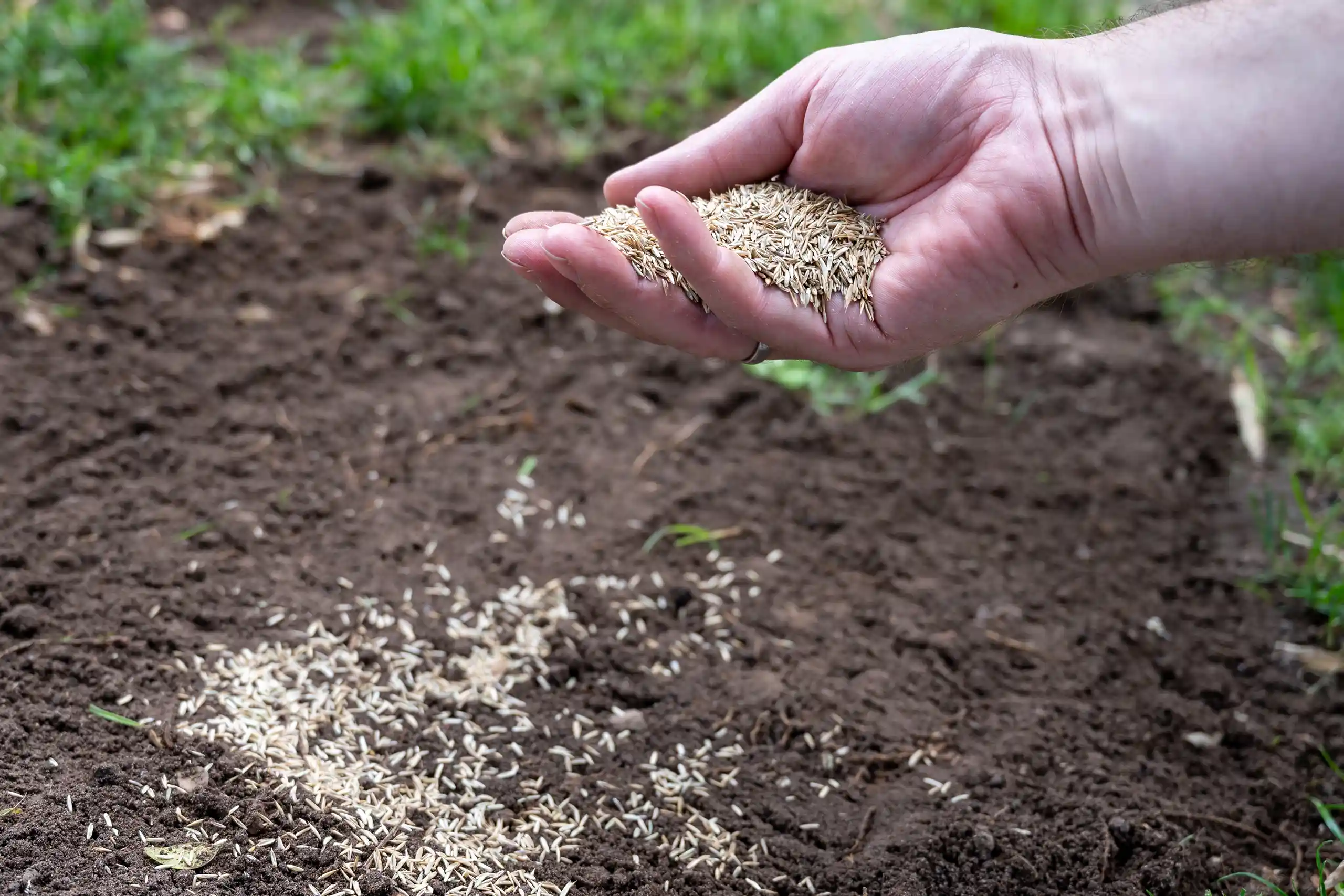Are you finding that your lawn is looking patchy, less vibrant, or sparse, despite months of dedicated care?
Don’t worry, you are not alone. Many homeowners face the same issue due to factors like foot traffic, varying weather conditions, and pests.
Over time, these factors can impact your lawn’s health, leading it to weaken and discolour.
Luckily, there is a simple way to bring your lawn back to life, and that is overseeding.
Overseeding is a straightforward and effective solution that will leave your lawn thicker and more resilient.
Continue reading to find out everything you need to know about overseeding your lawn…
What does ‘overseeding grass’ mean?
Overseeding your grass refers to the process of spreading grass seed over an existing lawn. It is an important part of lawn maintenance that must be followed to maintain a healthy green landscape.
Unlike starting from scratch, overseeding allows you to reap the benefits of your current lawn by improving its health, density, and promoting new grass growth.
Why is overseeding your lawn important?
Overseeding your lawn offers a number of benefits that will contribute to your lawn’s overall health:
- Improving thickness and density
- Reducing weeds and pests
- Enhancing colour and appearance
- Increasing tolerance to foot traffic
- Improving soil structure
- Promoting new grass growth
- Ensuring your lawn lasts longer and requires less maintenance
In addition to the above benefits, overseeding your lawn is also a more cost-effective option.
This is because you can work with what you already have without starting from scratch and breaking the bank with major lawn renovations.
Our high-quality Thick & Thriving grass seed can easily be added to your lawn, helping you to achieve your dream landscape quickly and effectively.
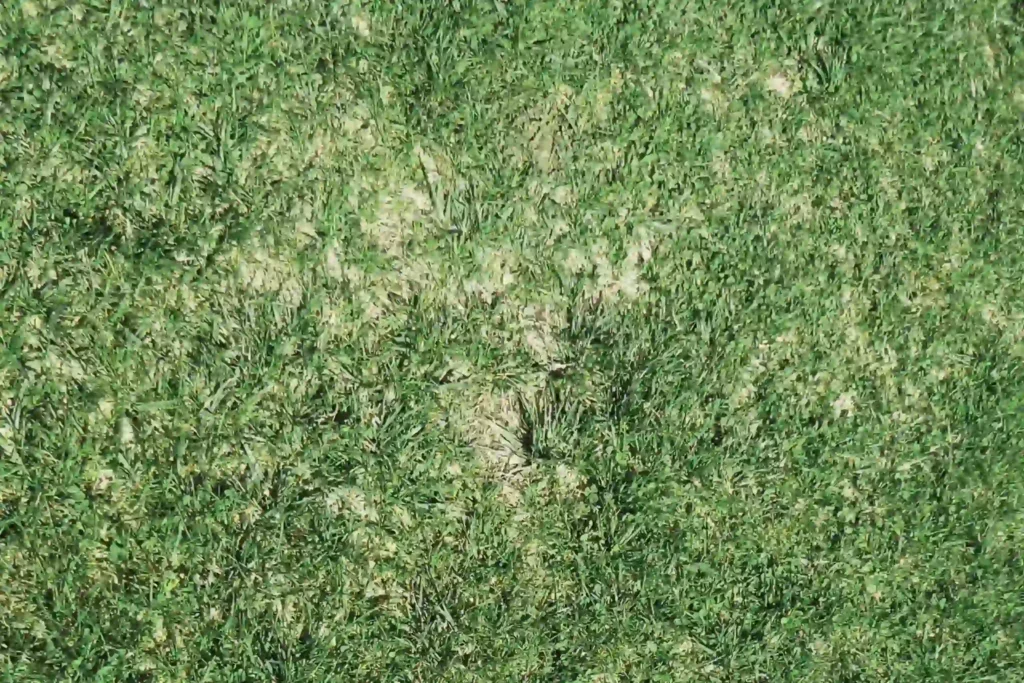
How often should I overseed my lawn?
How often you should overseed depends entirely on your lawn’s condition.
If you find that your lawn is developing patches or thinning year after year, then you should overseed yearly.
However, if your lawn continues to look thick and healthy, then you can overseed once every few years.
When is the best time to overseed your lawn in the UK?
In the UK, you should plan to overseed your lawn in the spring (March to May) or in early autumn (September to October).
These are the best times for overseeding grass, as they offer optimal conditions for your grass seeds to germinate. In order to do this, your seeds will require mild temperatures, consistent rainfall, and reduced competition from weeds, as these factors ensure that your seeds establish strong roots.
By overseeding during these seasons, you are effectively giving your seeds a head start to thrive before the harsher conditions of summer and winter begin.
Should you mow before or after overseeding?
It is essential to mow your lawn before you begin overseeding.
Ideally, you want to mow your lawn to a height of 3 cm (about 1.18 in), as this allows the new grass seeds to easily reach the soil and start the germination process.
You can do this by setting your mower to a shorter setting than your usual mowing height; just be sure to avoid scalping the lawn, as this can damage your existing lawn and expose the soil.
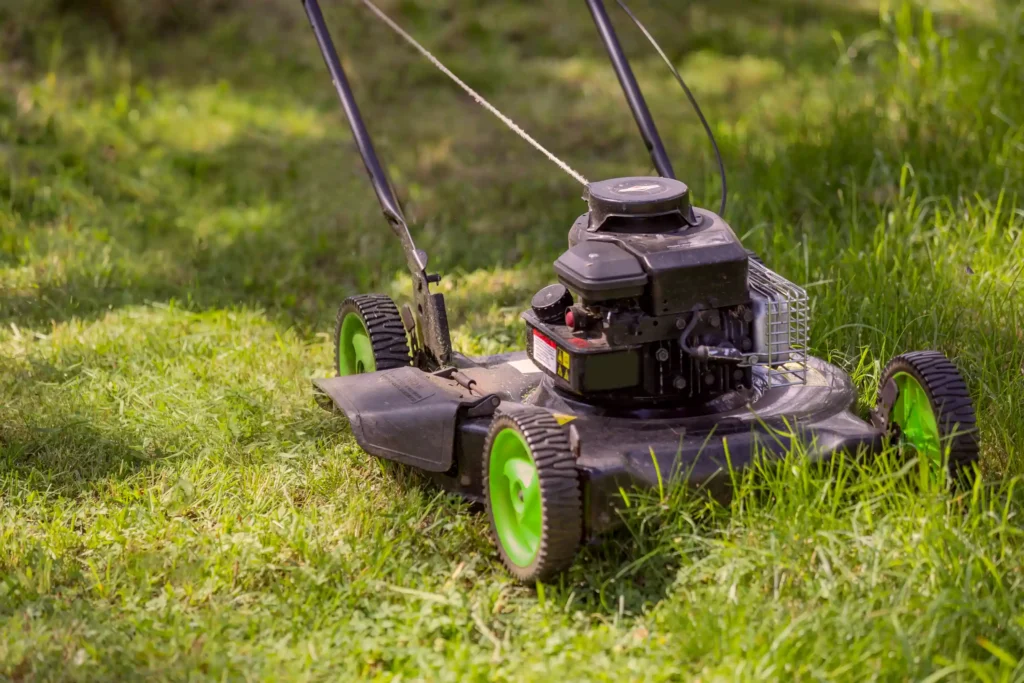
Should I rake before or after overseeding?
You should also rake your lawn before overseeding, as this helps to clear and prepare the soil ready for the new seeds to germinate.
Raking allows you to get rid of any debris or dead grass while also loosening the soil to improve the seed-to-soil contact.
Should you overseed before or after topsoil?
If you need to improve the quality of your soil, you may be considering using topsoil to aid the germination of new seeds.
Whether you do this before or after overseeding depends on how much topsoil you plan to apply.
If you want to use a heavy amount of topsoil, it is better to overseed afterwards.
This is because applying a heavy amount of soil over your seeds can affect their placement and hinder germination.
However, if you only need to apply a light amount of topsoil, you can overseed your lawn before adding a top dressing.
This will allow for optimal seed-to-soil contact as well as protection from harsher weather conditions and movement due to animals.
How to overseed a lawn: step by step
Overseeding your lawn does not have to be a complicated process; in fact, it could not be simpler.
By following the correct steps, you can ensure your new grass seeds thrive and grow into a lush and healthy lawn.
Whether you are a seasoned gardener or new to lawn care, follow our easy step-by-step instructions to achieve the best results:
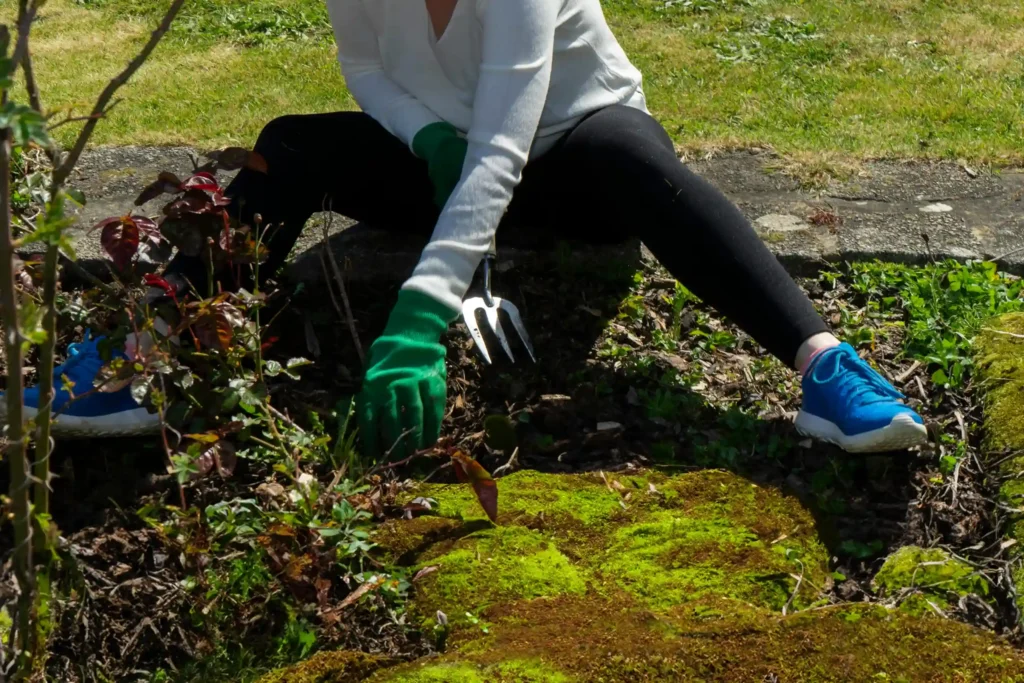
- Clear your garden. Remove or kill any weeds or moss that could hinder your seed growth with our expertly blended Weed Wipeout treatment.
- Mow your lawn. Ensure your grass is cut down to approximately 3 cm (about 1.18 in) to ensure new seeds can reach the soil.
- Remove any debris. Clear any remaining debris like grass clippings, stones, and thatch using a rake or by scarifying your lawn.
- Aerate your lawn. This is optional and does depend on whether your soil is compact. Aerating your lawn will allow your seeds and growing roots to receive more air, water, and nutrients.
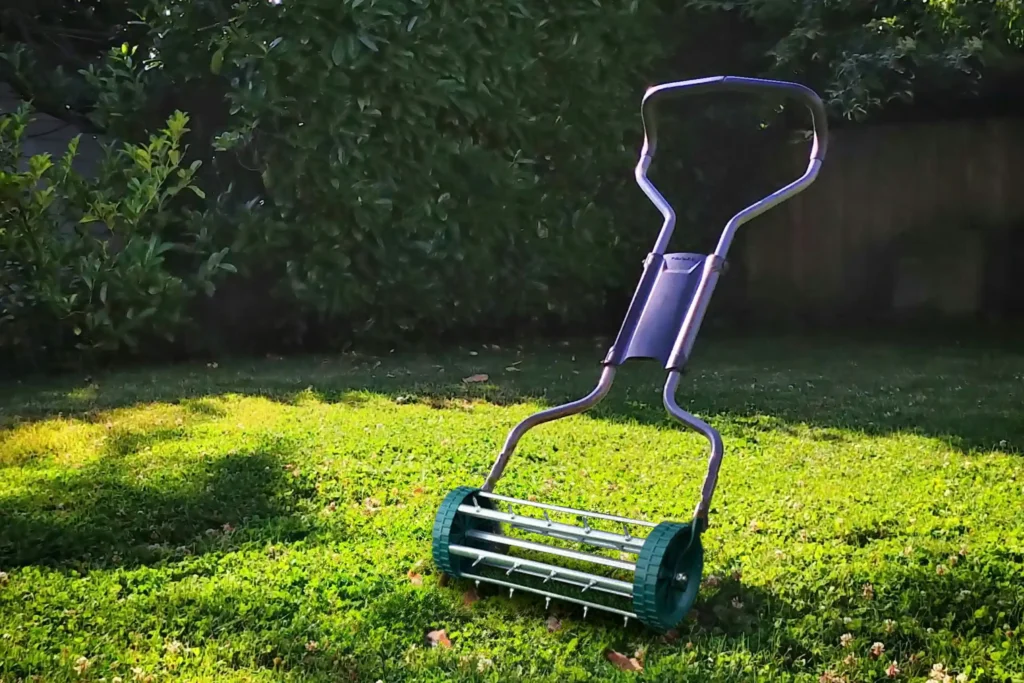
- Add your fertiliser. Adding our Perfect Prep Fertiliser will help create a nutrient-rich environment for your new seeds. Our specially formulated grass fertiliser provides optimal nourishment and aids germination, which in turn assists with growth.
- Spread your grass seed. To achieve an enviable lawn, make sure you apply the seed as evenly as possible. If you have a larger garden, you may need to use a spreader to ensure all areas have been covered.
- Apply topsoil. This is optional and can be done before or after applying your grass seeds. It does depend on how much soil you need to apply. If it is a light layer, this can be done after overseeding and can help promote germination.
- Rake over your seed. Once you have spread your seeds, you should lightly rake over them to ensure your seed is in contact with the soil and can germinate effectively.
- Start watering. After overseeding your lawn, you will need to water your new seeds regularly so they can settle into the soil and germinate successfully.
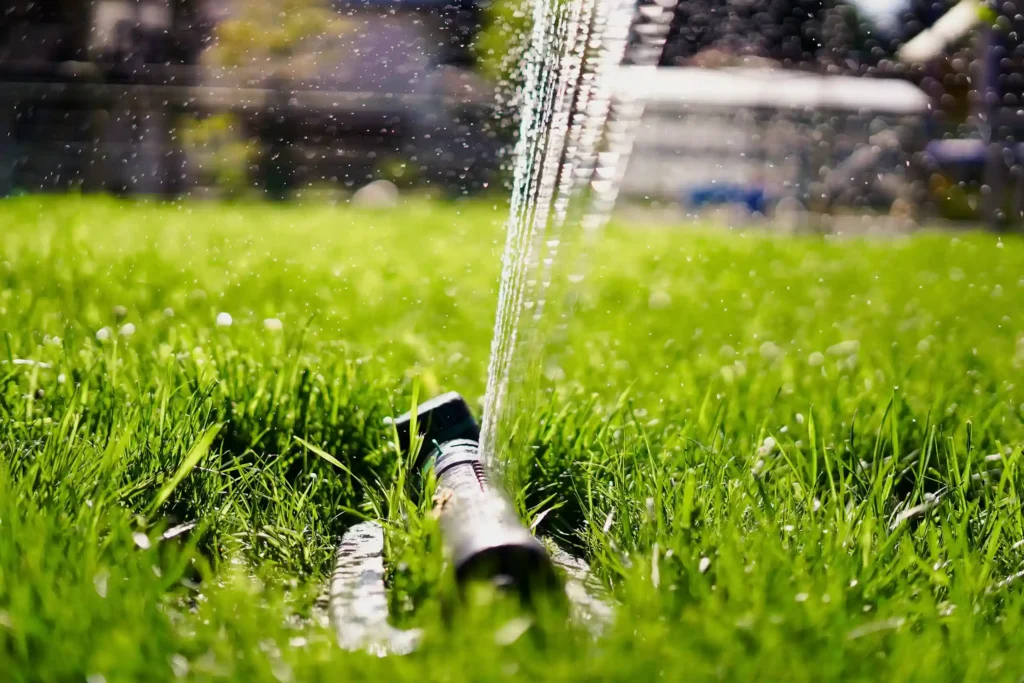
What to do after overseeding a lawn?
Once you have overseeded your lawn, you will then need to think about aftercare.
Although your seeds may have successfully germinated, they will still require care in order to thrive.
Follow these steps to ensure you are providing your seedlings with the correct post-overseeding care:
- Water consistently. Your seedlings will need to stay hydrated throughout the germination process. Ensure that the soil is kept moist and not waterlogged, as your seeds may not take root properly.
- Avoid heavy foot traffic. Try to keep off the grass for at least the first two weeks after overseeding. This applies to loved ones and pets too! Heavy foot traffic can damage your new grass and impact root establishment.
- Fertilise. If you fertilised before overseeding, you will need to wait approximately 6-8 weeks before applying a follow-up fertiliser. This will give the starter fertiliser time to work without risk of overfertilising. However, if you did not use fertiliser before overseeding, you should apply a light fertiliser approximately 3-4 weeks after overseeding, with another application 6-8 weeks later.
- Wait to mow. You should wait to mow your newly grown grass until it has reached a height of at least 5-8 cm. This ensures that your lawn has had time to establish strong roots.
- Monitor for weeds. It is not uncommon for weeds to sprout up alongside new grass. Do not use any weed killer, as this can damage new seeds during the early growth stages. Instead, you will need to manually remove them until your new grass is strong enough to tolerate weed control treatments.
Without proper aftercare, even the most well-planted seeds may fail to germinate or establish roots.
Ready to start overseeding your lawn?
Overseeding is a simple yet effective way of transforming your lawn into a lush, green haven, without breaking the bank.
By following the correct process and providing the proper aftercare, you can easily improve your lawn’s health and appearance.
Ready to start your overseeding journey? Take our quiz to find out which products are right for you!
